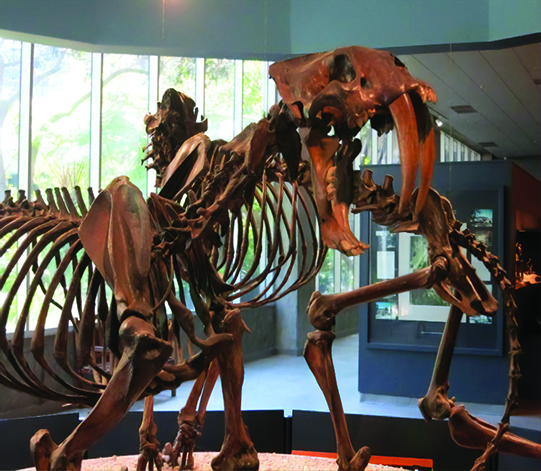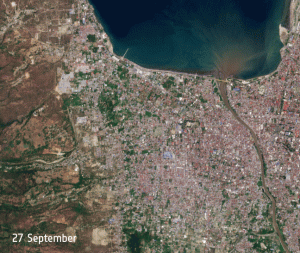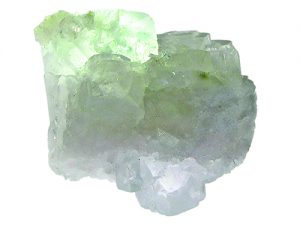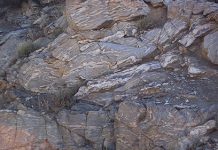
By Jim Brace-Thompson
Not So Savage a World, After All
After Charles Darwin published his theory of evolution by natural selection, paleontologists (and proponents of so-called Social Darwinism) often spoke of a savage and bloody dog-eat-dog world characterized by survival of the fittest. This view is summed up in a phrase lifted from a Tennyson poem: “nature, red in tooth and claw.”
But that was then. This is now.
A group of paleontologists led by Larisa DeSantis of Vanderbilt University recently reexamined the large trove of well preserved fossil jawbones from saber-toothed cats at the famous Rancho La Brea tar pits in Los Angeles. Their findings suggest a kinder, gentler world during our recent Ice Ages.
A number of the jaws sport telltale scars of injury and disease, but signs of healing show that the afflicted cats survived their ordeals for significant periods of time. Modern lions live in social groups known as prides. The findings of DiSantis and her colleagues suggest saber-tooth cats did, too, with healthy members of the pride providing and caring for their sick and injured kin. This is further supported by close analysis of microwear patterns on the teeth of the injured critters. The wear patterns suggest they shifted from gnawing on bone to eating softer flesh, perhaps provided by sympathetic companions tearing off and sharing pieces of their hunt.
Could “Supershear” Earthqakes Hit More Often than Thought?
Per a report in the February 8 issue of the journal Science, the magnitude 7.5 earthquake that devastated Palu, Indonesia in September 2018 with both earth-shaking impacts and a tsunami that killed over 2,000 people also may have broken “a geologic speed limit.”
This event has been dubbed a “supershear” and—per the report—it “raises fears that far more regions could be at risk of high-speed quakes than once thought.” The extent of the rupture along the strike-slip fault zone was 150 kilometers in a matter of just 35 seconds. It apparently traveled more than a kilometer per second faster than would have been expected and has been compared to “a jet going supersonic at takeoff.”
Earth scientists now fear other strike-slip faults are at danger of going “supershear,” including the San Andreas fault that resides all-too-close to my own home here in California.

When Life Gives Too Much Carbon Dioxide, Make Magnesite!
Carbon dioxide can be captured, locked up and stored away by a number of natural processes, from creation of limestone to absorption by plants that get buried and turn into underground coal deposits. This is known as carbon dioxide sequestration. But at the rate we humans are pumping carbon dioxide into our atmosphere, natural processes can’t keep up in sequestering this greenhouse gas that contributes to global warming. Until and unless we lower the amount of carbon dioxide we pump into the atmosphere, what to do?

Well, they say when life gives you lemons, make lemonade. Borrowing from that adage, a group of scientists led by environmental geochemist Ian Power has found a way to accelerate formation of the carbonate mineral magnesite. Magnesite is similar to calcite (the chief ingredient of limestone) but instead of combining calcium with carbon dioxide, it combines magnesium with carbon dioxide. In nature, magnesite forms slowly, most often in warm temperatures. Scientists have now found a way to speed its formation at room temperature.
We’ve already learned how to inject carbon dioxide into basaltic rocks deep beneath Earth’s surface where heat and water help to precipitate limestone, but that can be an expensive process. A process that would allow carbon sequestration at surface temperatures and pressures could conceivably provide a cheaper alternative. So, is this the lemonade we need to combat global warming? It is too early to tell about practical, large-scale applications, but this is certainly a hopeful step in the right direction!
Author: Jim Brace-Thompson
 Founder and overseer of the AFMS Badge Program for kids.
Founder and overseer of the AFMS Badge Program for kids.
He’s also an inductee of the National Rockhound & Lapidary Hall of Fame within the Education Category.















